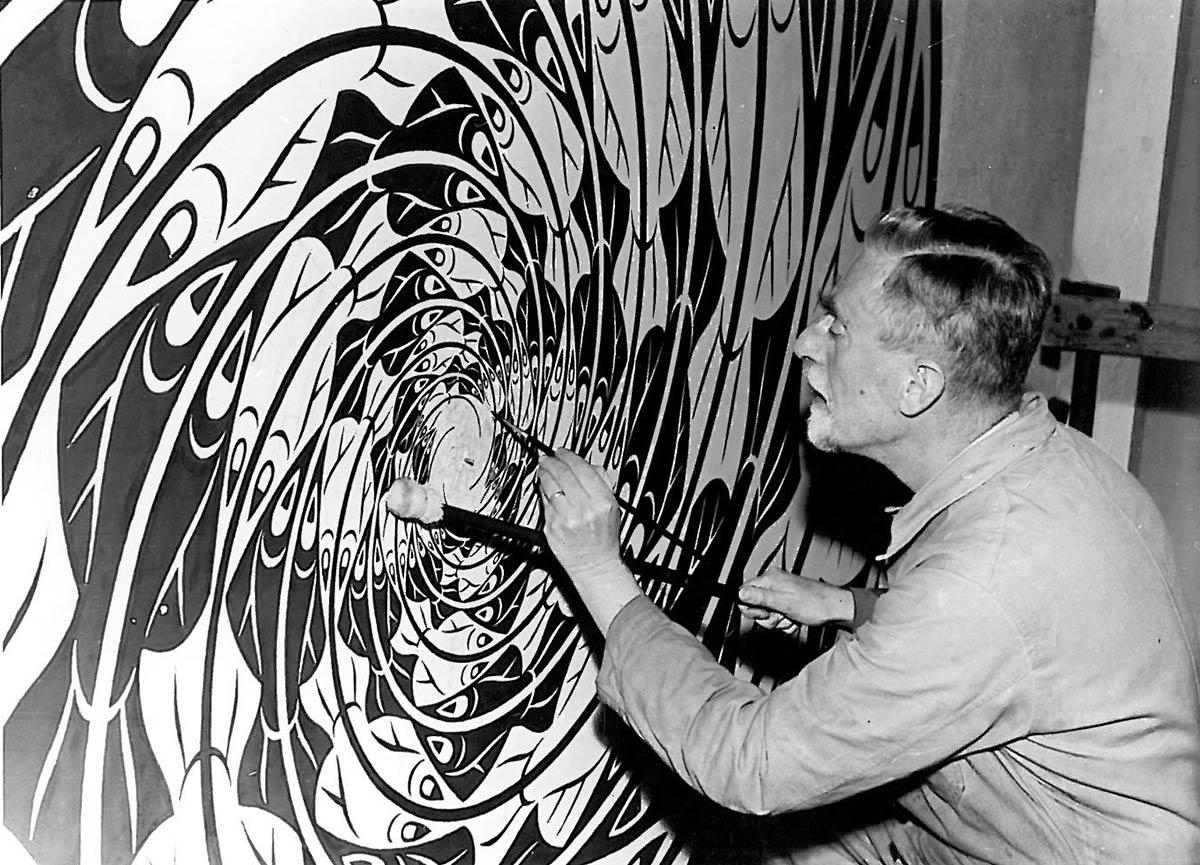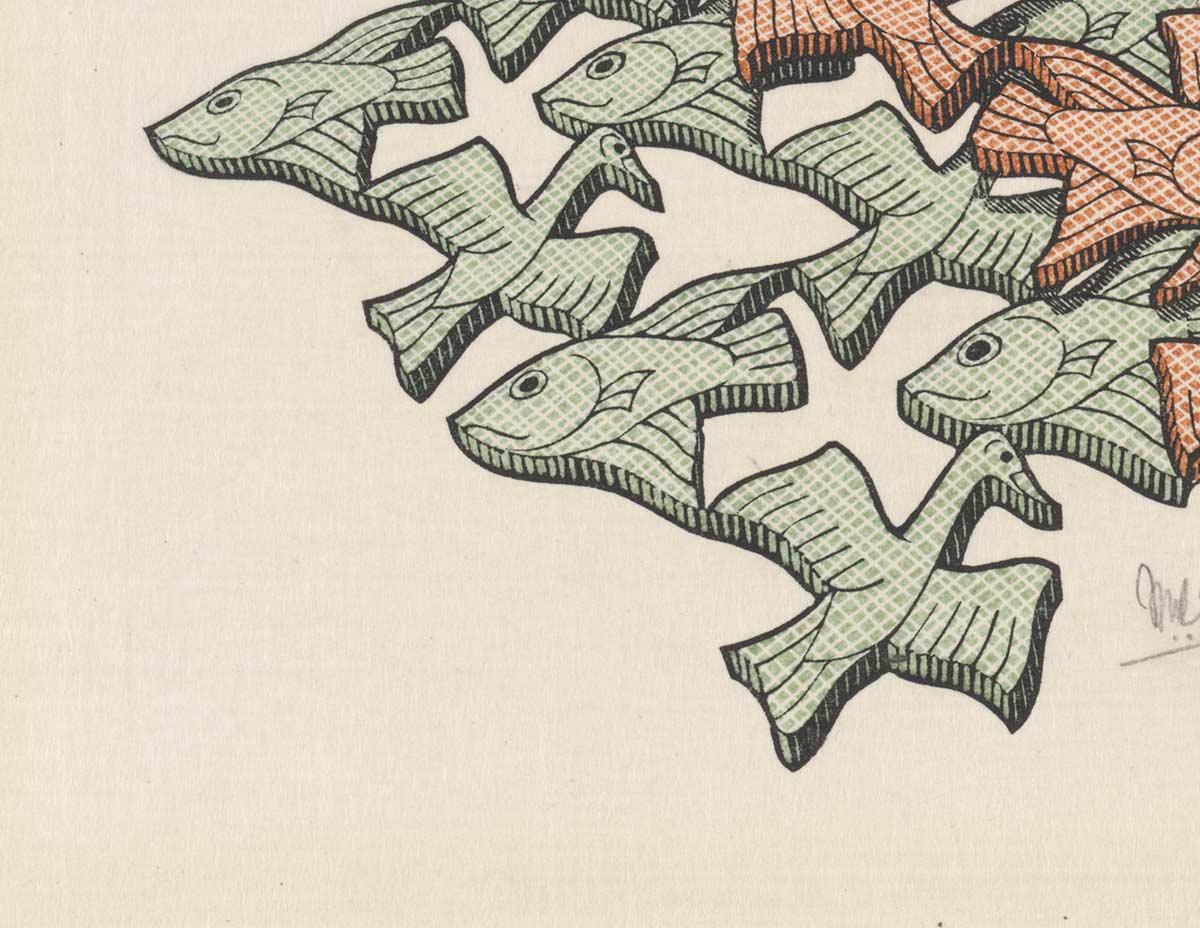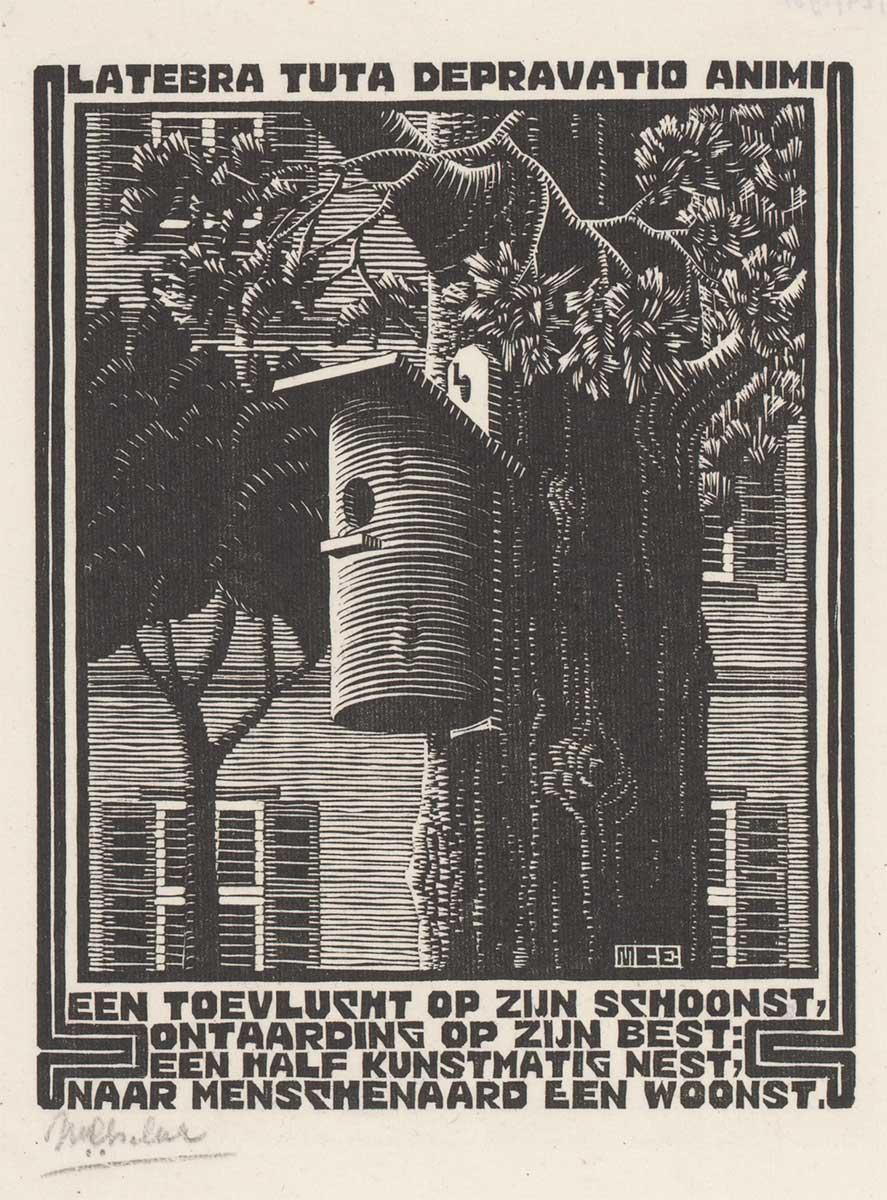

With Belvedere, Waterfall and Ascending and Descending, M.C. Escher created three iconic prints based on impossible figures: a cube, a triangle and a staircase. He invented the one for Belvedere himself, but the impossible triangle and the infinite staircase were presented to him by the British mathematicians Lionel and Roger Penrose. These figures were just thought experiments for Penrose Senior and Penrose Junior. But there was someone who had been obsessed with them all his life: Oscar Reutersvärd. This Swedish artist and art historian, who can be regarded as the archetypal father of the impossible figure, passed away on 2 February 2002.
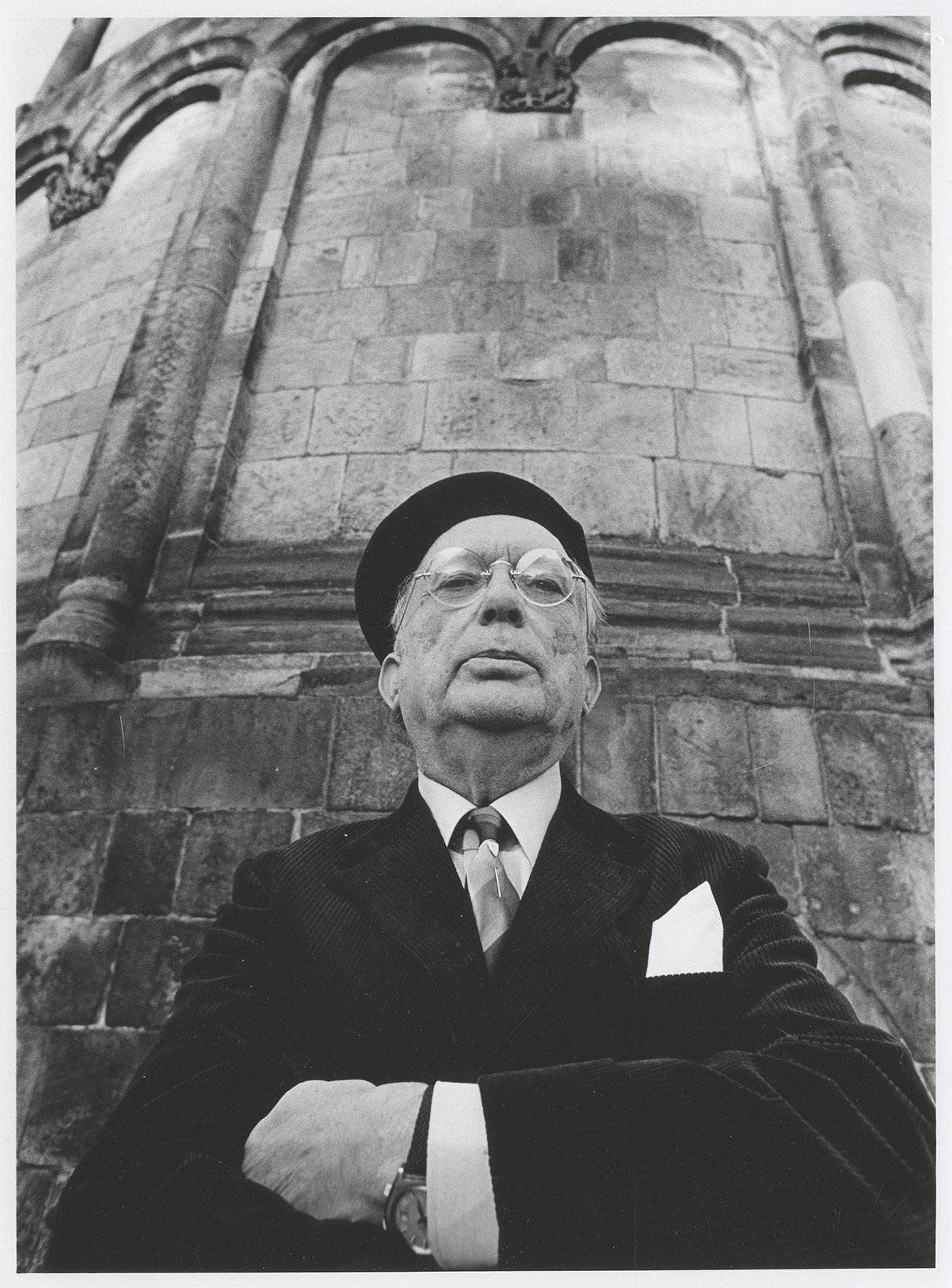
Oscar Reutersvärd, 1986. Foto: Michael Normann, CC BY 4.0, via Wikimedia Commons
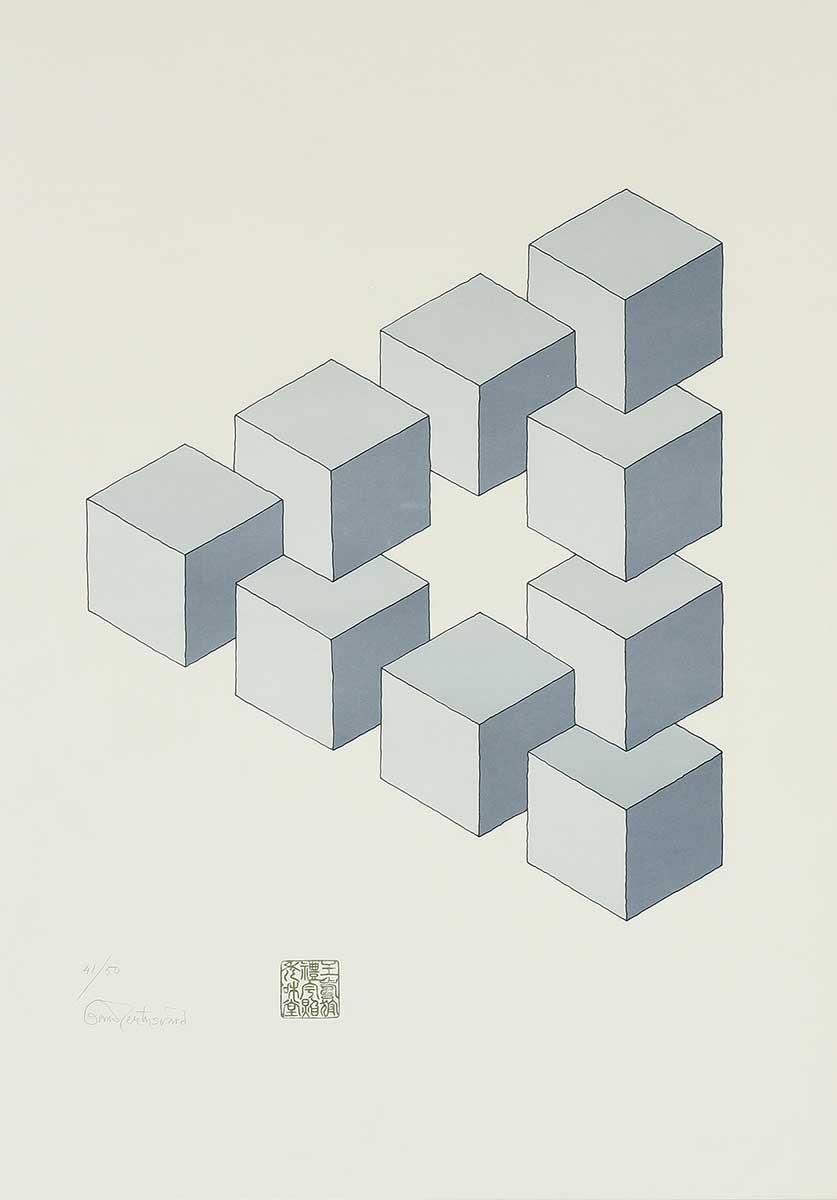
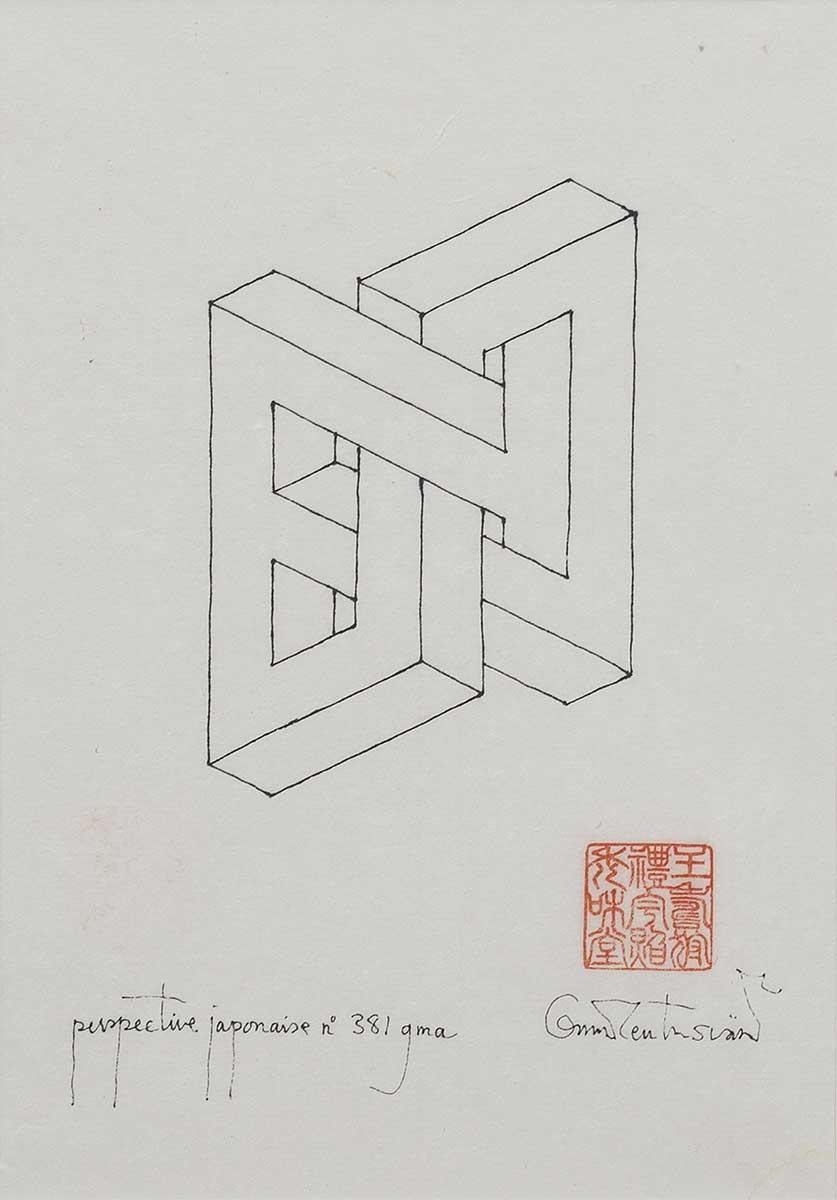
Just as Escher saw the regular division of the plane as ‘his’ terrain, Reutersvärd took the same view of impossible figures. As early as 1934, when Reutersvärd was only 18, he created the shape that the Penroses would not publish until 1958. The Swede came up with his impossible triangle while sketching cubes in perspective. It must have been a eureka moment for him. Before his eyes, a form arose that he could draw in two-dimensional form, but which cannot exist in three-dimensional form. He designed the impossible staircase in 1937, many years before the Penroses published the shape in the article Impossible Objects: A Special Type of Visual Illusion. But those discoveries were long hidden from the world. It wasn’t until 1984 that Roger Penrose (whose father Lionel died in 1972) discovered that Oscar Reutersvärd had invented the triangle and the stairs much earlier.
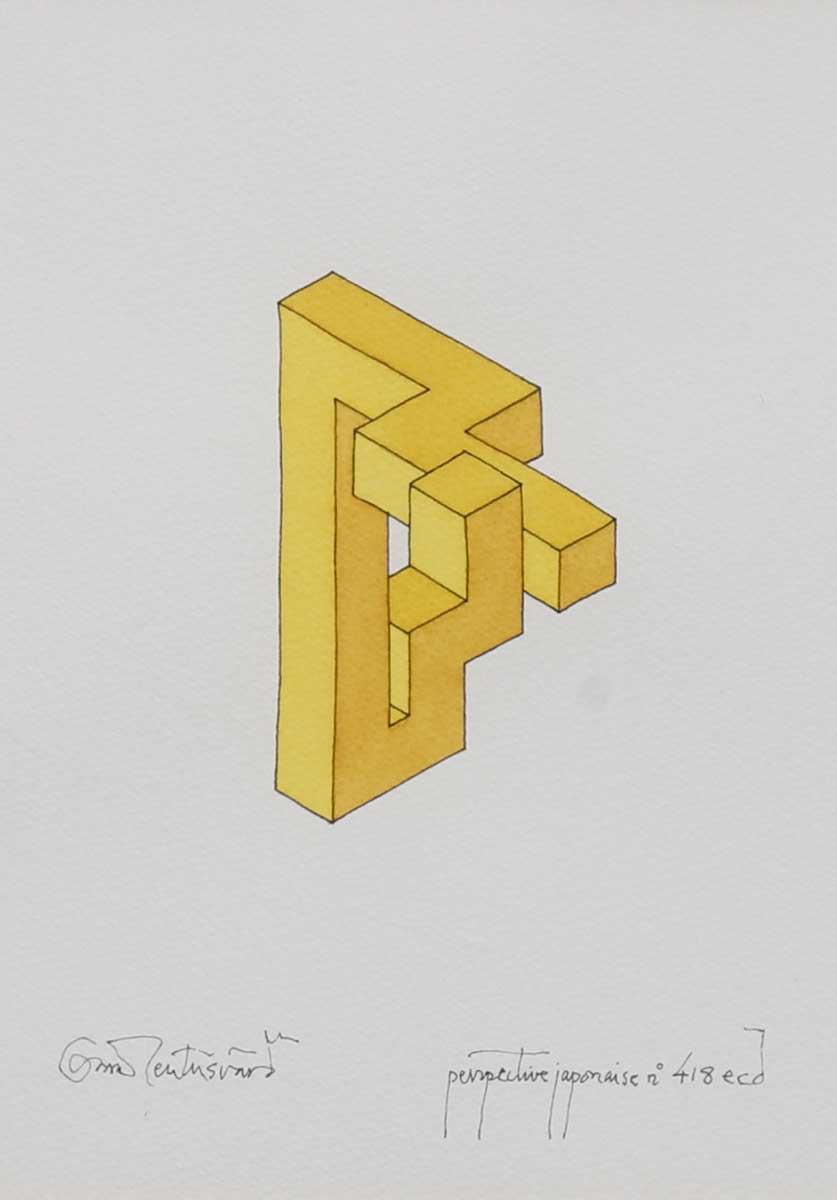
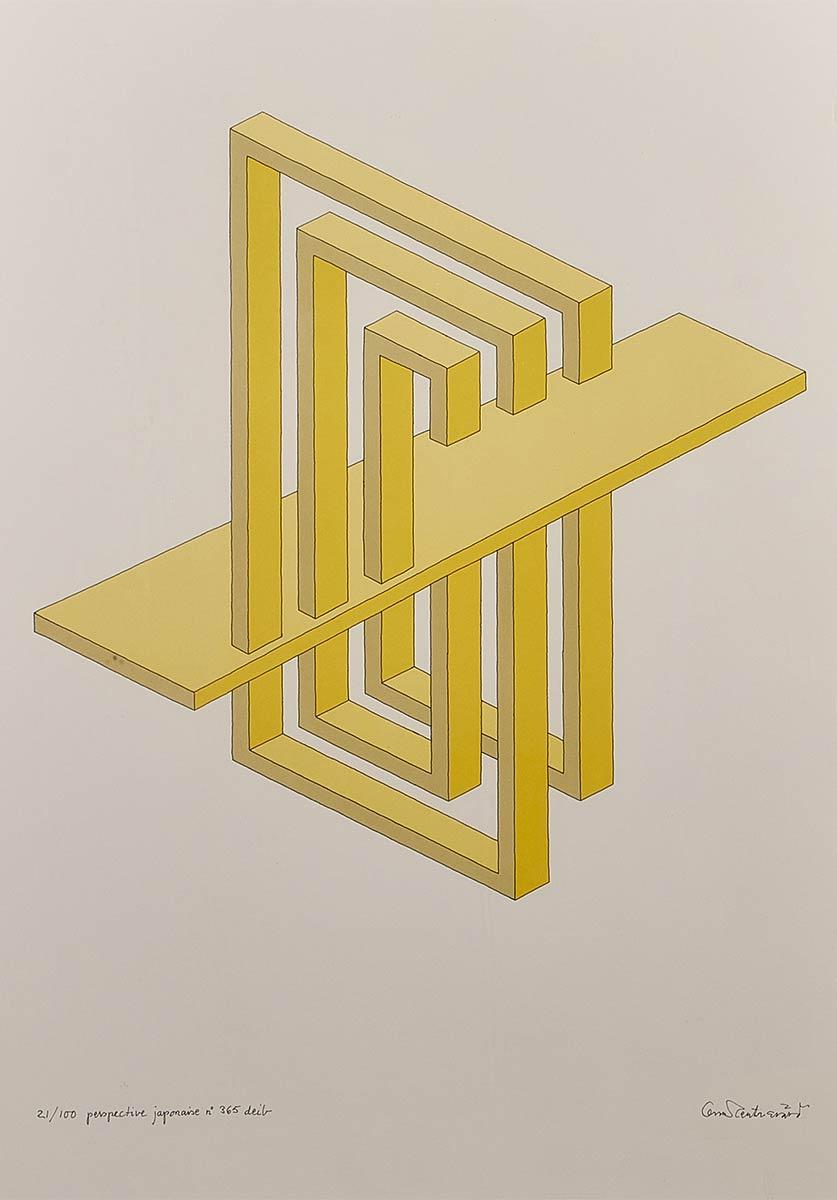
As it happens, Reutersvärd was not the first to fool the eye (and therefore the brain) either. His most famous predecessor is William Hogarth (1697-1774), who already produced an engraving in 1754 in which he showed that perspective tricks can completely deceive the viewer. Giovanni Battista Piranesi also used such tricks to enhance the dizzying effect in his Carceri d'Invenzione. However, he hid them in a maze of walls, stairs and vistas, such that their ‘impossibility’ is not immediately apparent. Optical illusions had long existed prior to that in the form of trompe-l’œils too. But Reutersvärd was the first to deal with these forms so consistently. In them, he always applies the same isometric projection, which entails the perspective lines running in parallel and not touching each other at the vanishing point. His shapes (of which there are thousands) are always drawn as is, without additional forms or decorations. Hence his approach differed from that of Escher, who concealed his impossible shapes in a setting that looked as realistic as possible.
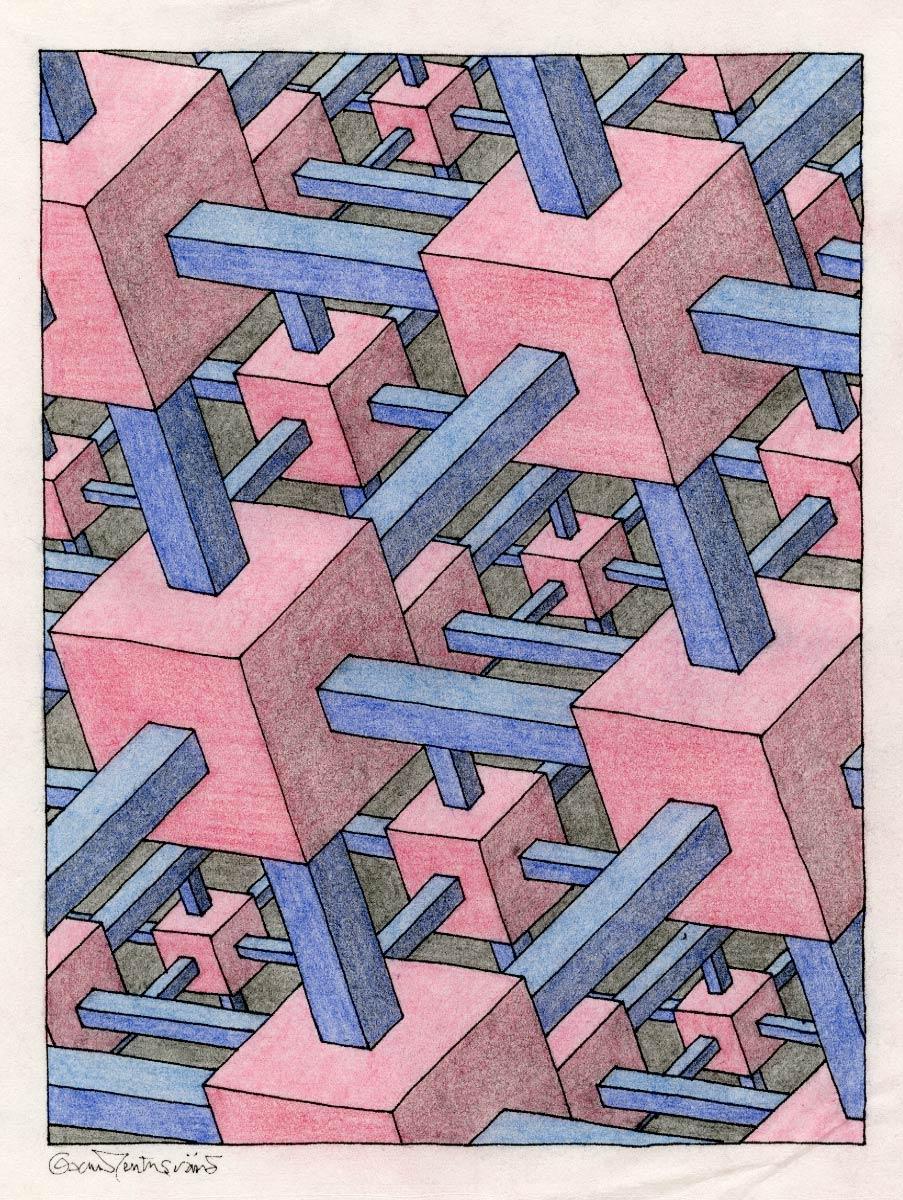
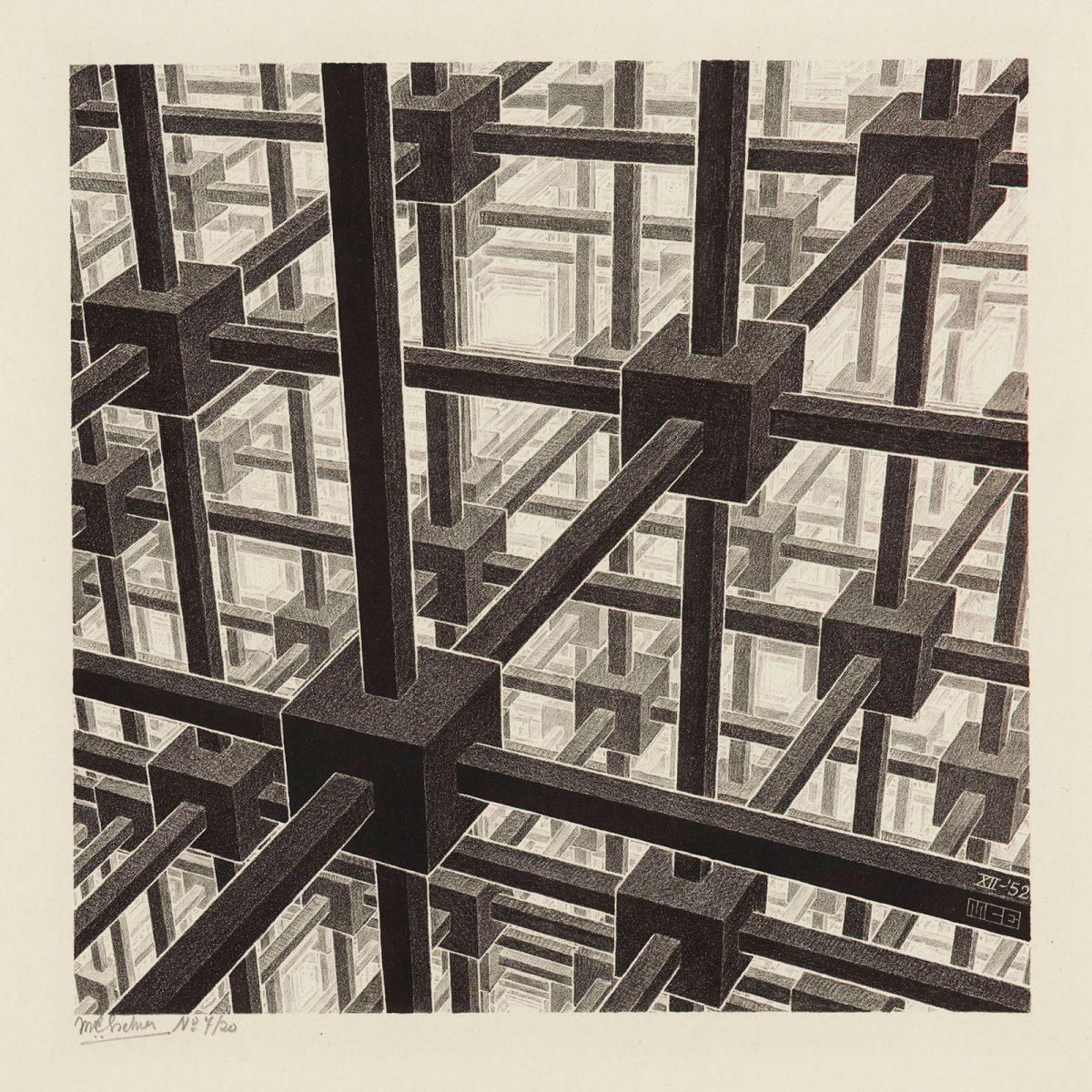
Oscar Reutersvärd was born in Stockholm in 1915. There, he studied art history and in 1950 a grant enabled him to go to Paris to study with artist Fernand Léger. Together with a number of fellow art historians, he organised an exhibition in Paris in 1953 under the name L'art Suédois – 1913-1953, featuring 40 years of Swedish modern art. He also developed himself as a draftsman, painter, graphic artist, designer, and sculptor and became a champion of abstract art in his native country. His sculptures can be seen in several places in Sweden and in 1991 a retrospective exhibition about him was held in Stockholm with about 150 of his smaller sculptures. He also designed mazes, a number of which have been created outdoors in Sweden. In addition to his artistic career, he also developed himself as an art theorist, lecturing at Stockholm University from 1953 onwards and serving as a professor of art history and art theory at Lund University between 1964 and 1981. Reutersvärd has several art-theoretical publications to his name.
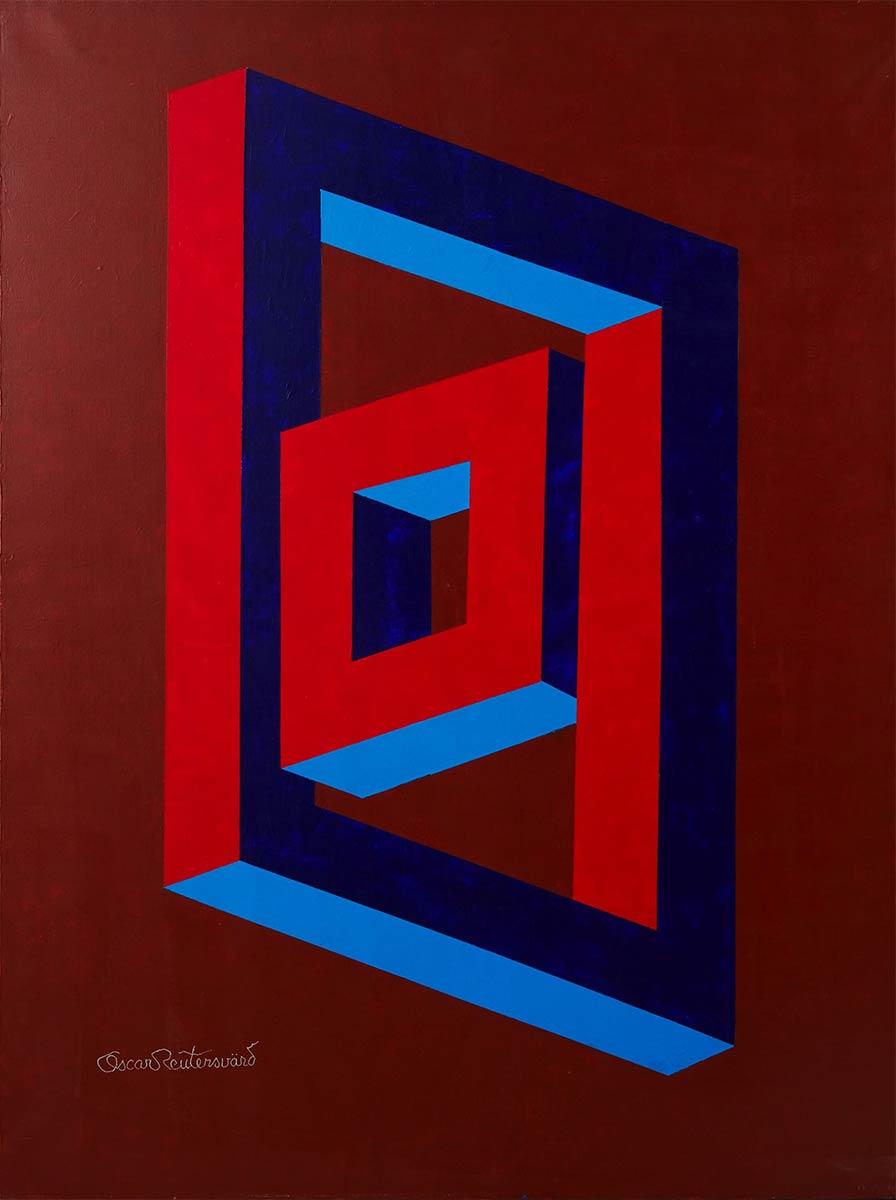
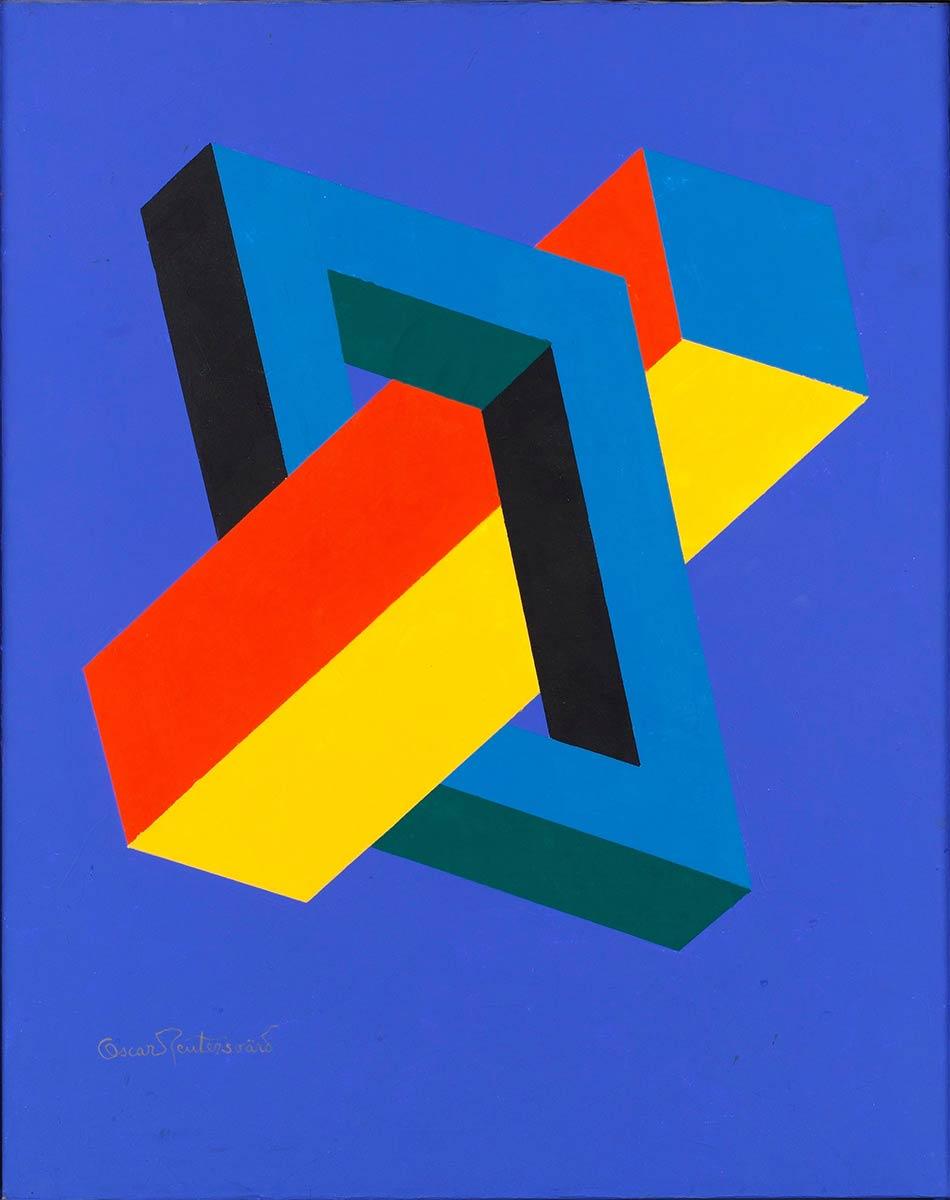
After his first impossible figures in the 1930s he made more of them, but it was not until he saw what the Penroses and Escher were doing with them that his enthusiasm for the subject was rekindled. He drew his figures by hand and then reproduced them in the form of a colour lithograph, which he numbered under the title 'perspective japonaise'. He also produced unique pieces in Indian ink, felt tip, and various types of paint. From the early 1960s onwards he created many impossible figures this way. This created the paradoxical situation in which Reutersvärd seemed to be following in the footsteps of the British Penroses and the Dutchman Escher, despite initially having been years ahead of them. According to Bruno Ernst, the mathematician who wrote several books about M.C. Escher and about impossible figures, Reutersvärd tried several times to get in touch with Escher but failed. It is not known why Escher did not respond.
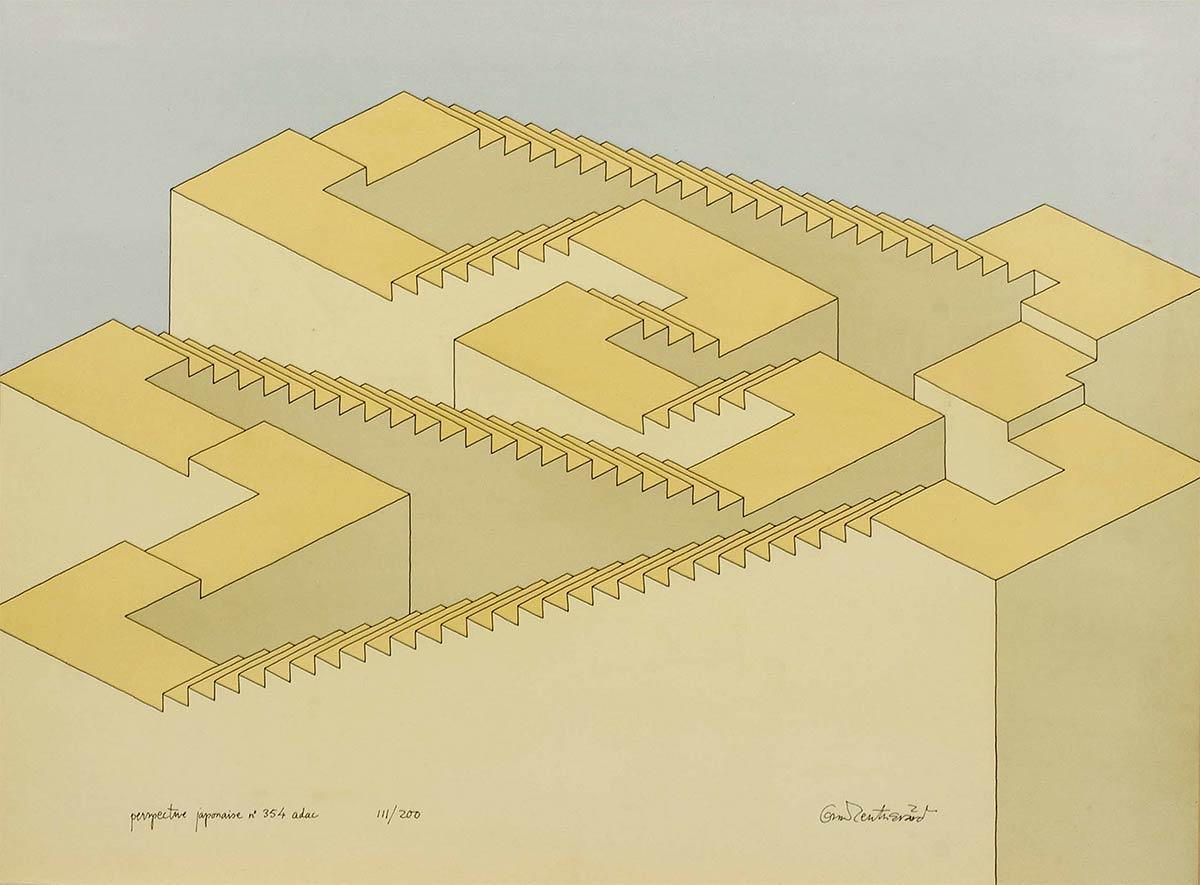
In 1982, the Swedish Post issued three stamps featuring three of Oscar Reutersvärd’s impossible figures, including his first-ever impossible triangle. It triggered a resurgence in popularity for Reutersvärd in his native country. That year, a book containing a selection of his drawings was published too. Although it has been translated into several languages, Reutersvärd has always lost out to Escher globally. The question is whether he thought that was a problem. His impossible figures were mainly the visual expression of a quest. An account of an obsession that had completely taken over him.
It was not until 1985 and 1986 that Bruno Ernst brought the two artists together in his books Adventures with Impossible Figures and The Eye Beguiled: Optical Illusions. Reutersvärd, meanwhile, steadily continued with his own impossible figures, until his death in 2002.
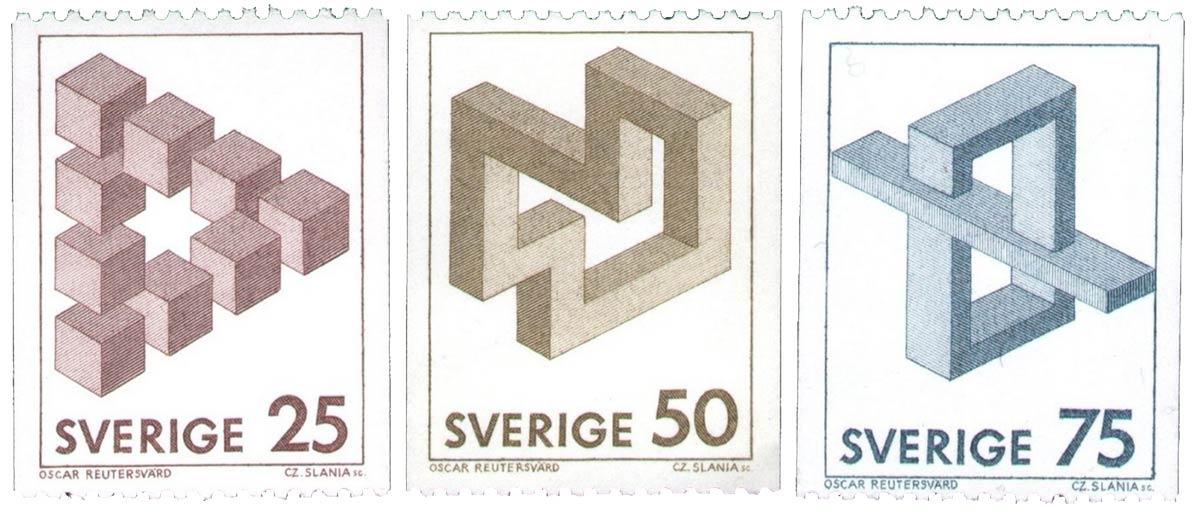
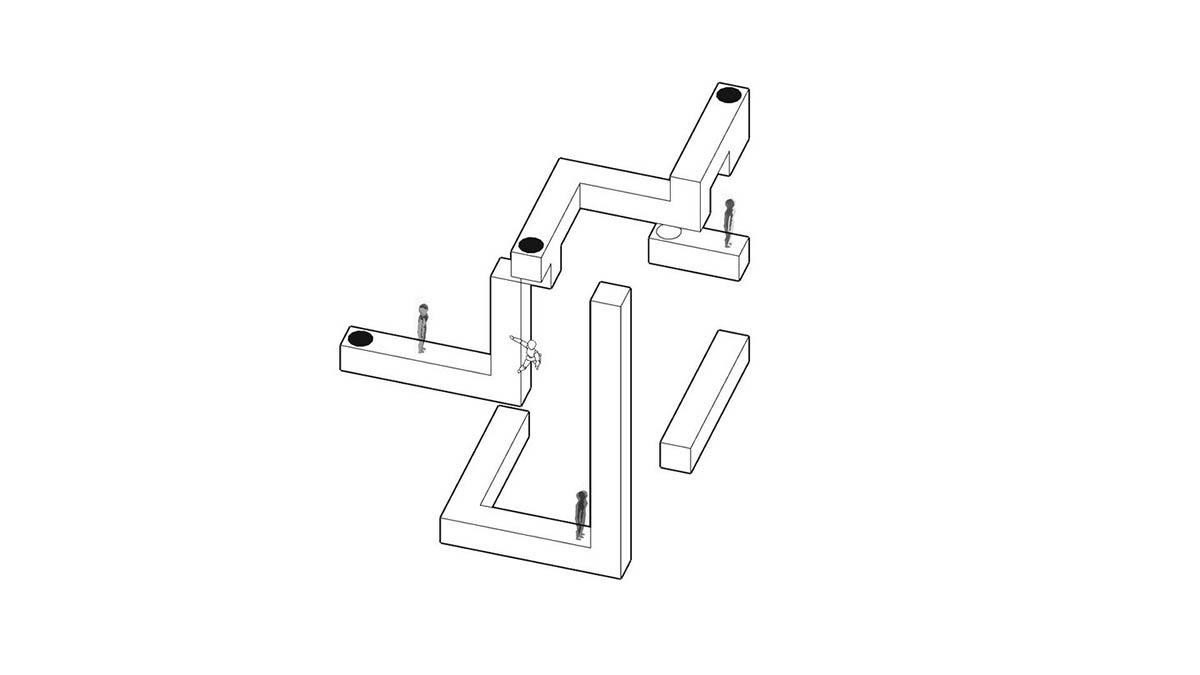
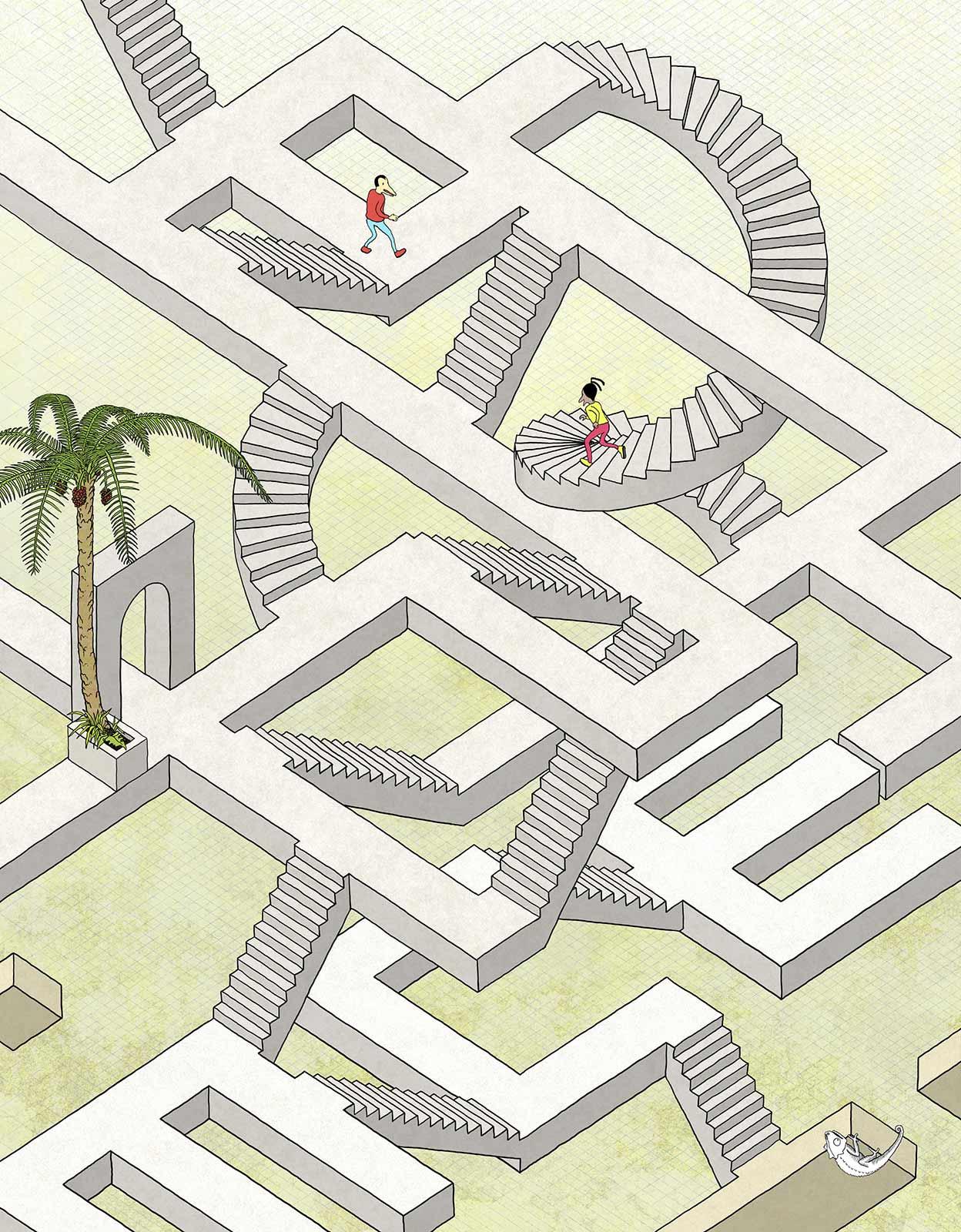
Besides M.C. Escher there is another Dutch artist whose work contains parallels with that of Oscar Reutersvärd: the artist-mathematician Rinus Roelofs. He too is always looking for new shapes with a mathematical side. The big difference between Roelofs on the one hand and Reutersvärd and Escher on the other is that Roelofs' shapes seem impossible but are not. He draws them on the computer, after which he actually creates them in 3D. In 2007 Bruno Ernst released a publication about the two artists at the 'Ars et Mathesis' foundation. Escher in The Palace organised an exhibition on Rinus Roelofs in 2018. Wouter van Reek was also inspired by impossible figures for his picture book Nadir and Zenith in the world of Escher. Reutersvärd was not directly a source, but the similarities are nevertheless clear.
Reutersvärd’s work also resurfaces in games. Echochrome (2009) and Monument Valley (2014) are games featuring impossible figures shown from an isometric perspective, made possible by rotating that perspective or moving a shape.

